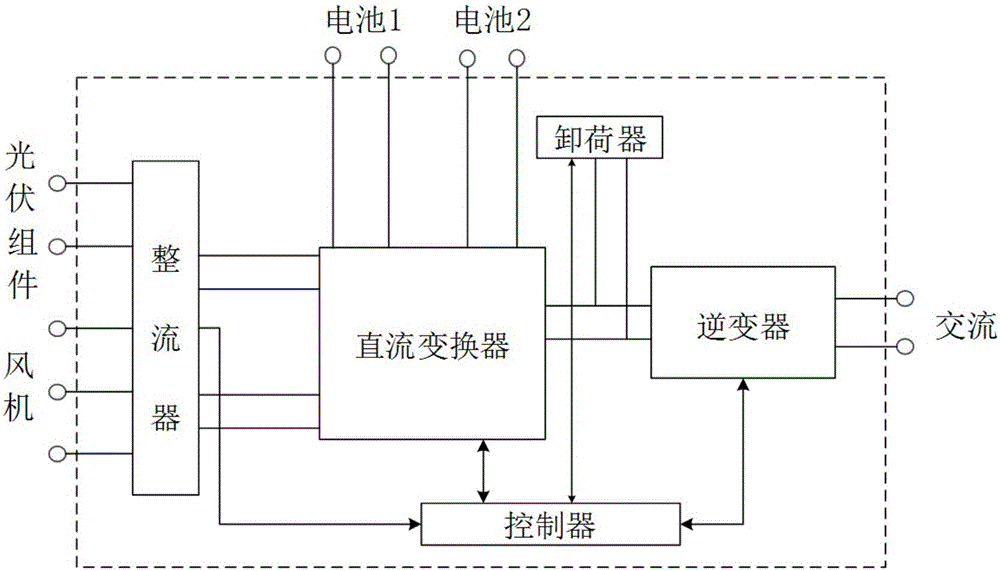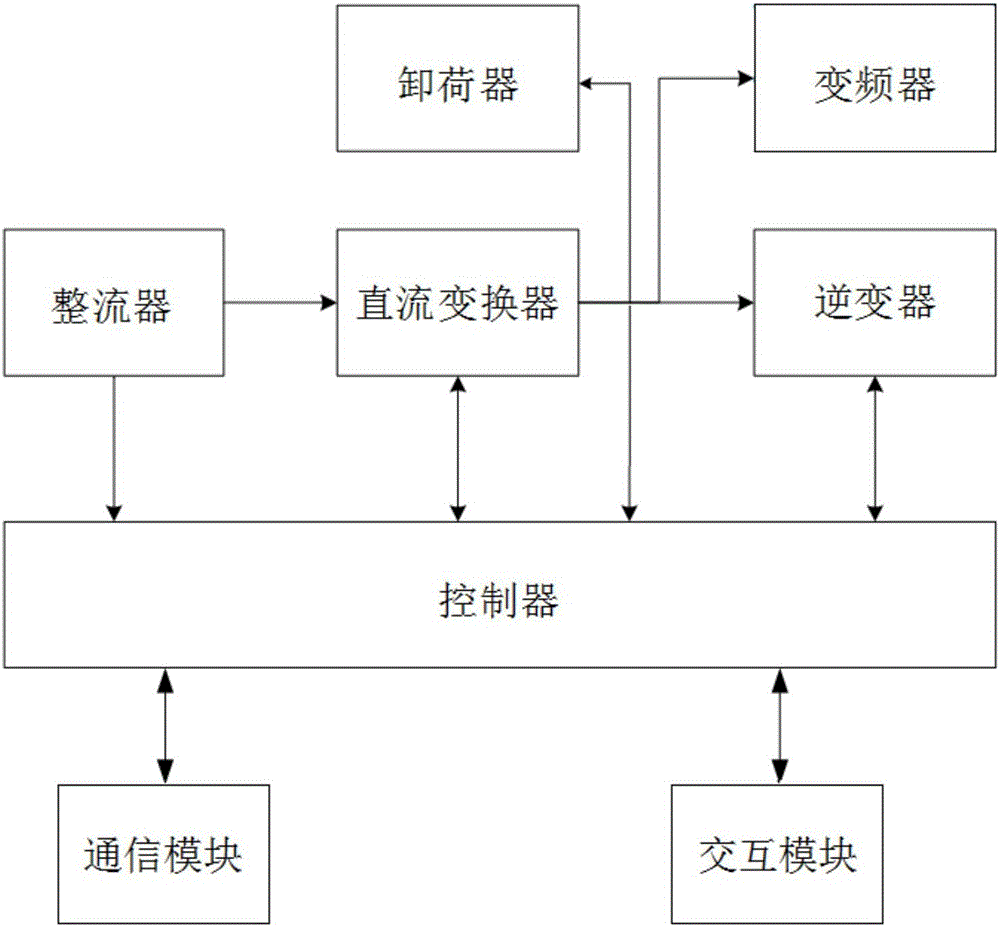Power supply access apparatus
A technology for access devices and power generation units, which is applied in the direction of circuit devices, AC and DC network circuit layout, electrical components, etc., can solve the problems of high development cost, high cost, and large space occupation, so as to improve connection reliability and facilitate development , the effect of reducing the volume
- Summary
- Abstract
- Description
- Claims
- Application Information
AI Technical Summary
Problems solved by technology
Method used
Image
Examples
Embodiment Construction
[0025] Such as figure 1 , figure 2 As shown, the power supply access device of an embodiment of the present invention is used to connect the power generation unit and the energy storage unit, including a rectifier, a DC converter, an unloader and an inverter. The rectifier is used for the input of the power generation unit, and the DC The converter is used for voltage boosting, the unloader is used for releasing excess energy, the inverter is used for converting direct current into alternating current, and the power supply access device also includes a controller, and the controller is used for controlling the direct current converter, the unloader and the inverter.
[0026] In this embodiment, the DC converter, the unloader and the inverter share one controller, which saves the controllers of the three circuits, reduces the occupied space and reduces the cost.
[0027] The power generation unit is a DC power generation device and / or an AC power generation device, as long as...
PUM
 Login to View More
Login to View More Abstract
Description
Claims
Application Information
 Login to View More
Login to View More - R&D
- Intellectual Property
- Life Sciences
- Materials
- Tech Scout
- Unparalleled Data Quality
- Higher Quality Content
- 60% Fewer Hallucinations
Browse by: Latest US Patents, China's latest patents, Technical Efficacy Thesaurus, Application Domain, Technology Topic, Popular Technical Reports.
© 2025 PatSnap. All rights reserved.Legal|Privacy policy|Modern Slavery Act Transparency Statement|Sitemap|About US| Contact US: help@patsnap.com


